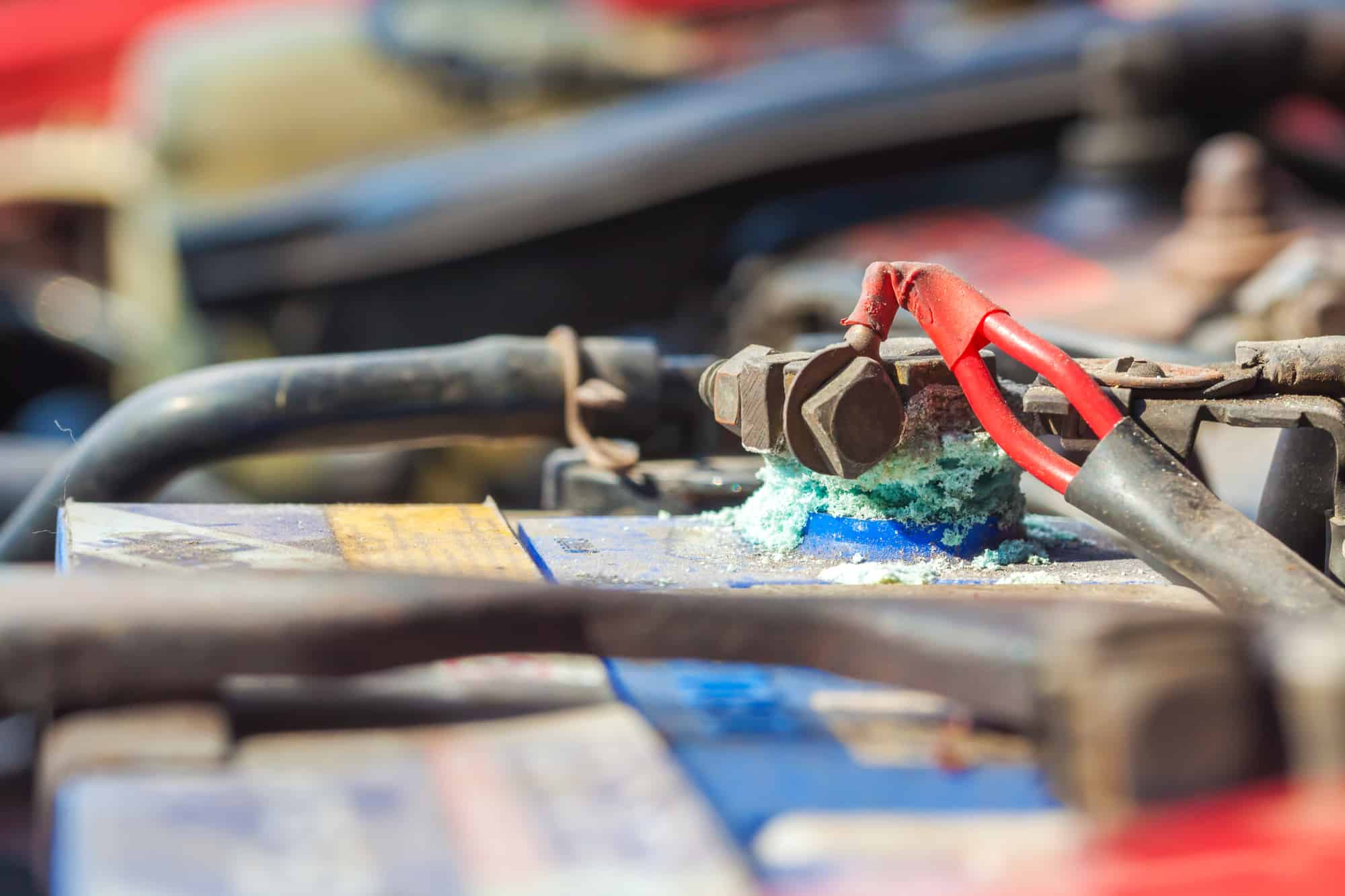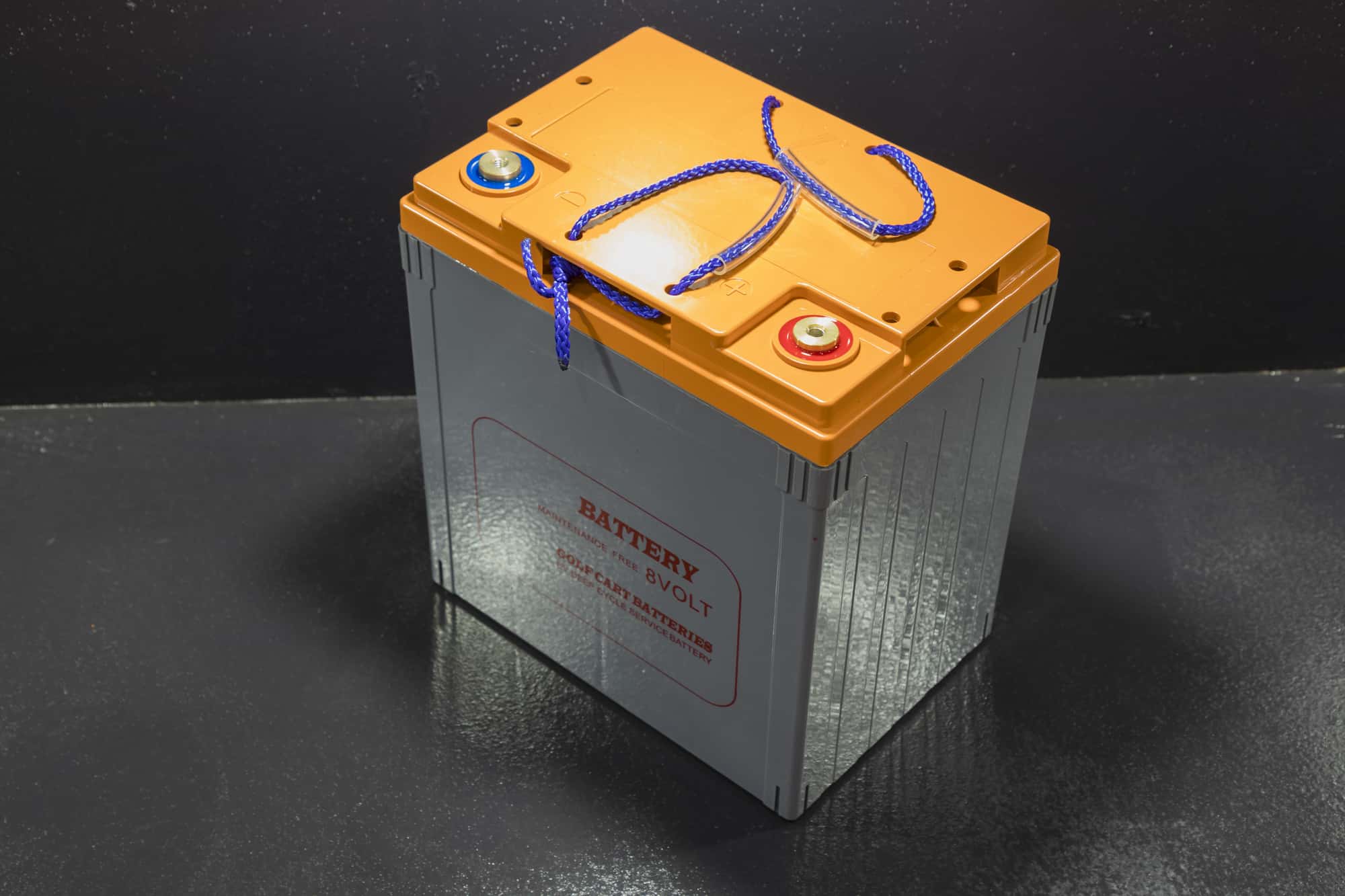
When you’re running your golf cart, you probably want to get it to go as fast possible for your carting needs.
That desire is understandable but may be sabotaged by a few different factors.
First of all, your cart is designed to be capable of only a pretty specific maximum speed.
However, there is also a part known as a governor that keeps your cart’s speed at a safer and more reasonable level.
Here’s another fun fact, though: you can remove or deactivate the governor from your cart engine to speed up your cart.
You need to be very careful when you perform this step, though, because you may end up making a mistake that damages your engine.
The following article will showcase how to deactivate or remove the governor from EZGO, Yamaha, and Club Cart Carts.
How to Take the Governor Off a Golf Cart

Tools Need for This Process
Before we get into the processes needed for each golf cart manufacturer listed here, we are going to discuss the tools that you need to adjust your governor.
The necessary tools are, thankfully, not that difficult to find and may be things that you already own.
We recommend that you own these types of tools, anyway, if you are going to own or operate a golf cart of any type.
First of all, you’ll need a handful of wrenches that can be easily adjusted.
These wrenches will be used to do things like tighten the governor screw on a golf cart and make it easier to tweak.
You may also need some wrenches to open up your engine or other panels on your cart.
Thankfully, a single wrench is often good enough for a cart but finding the right size may be difficult to handle for some.
Beyond these wrenches, you’re also going to need various screwdrivers.
The exact type of screwdrivers that you’ll need will vary depending on the manufacturer and the model of the cart that you own.
Though we can’t break down the types needed based on model, we can help you with the manufacturer model.
And don’t forget that there may be moments throughout each following section in which we discuss the necessary tools for each cart manufacturer.
These suggestions may or may not be present in each section because some carts don’t need a very diverse tool set.
That said, however, some carts do need more tools, so please pay attention as you read to ensure that you get the right items you need.
The Steps Needed for EZGO, Yamaha, and Club Car Golf Carts

As mentioned previously, we are going to discuss three golf cart manufacturers in this article: EZGO, Yamaha, and Club Car.
There are a few reasons why we’re focusing on them.
The first reason is the most obvious: these cart manufacturers are the most common and respected on the market.
There’s a very good chance that you own one of these models if you own a cart.
We also choose these models because their adjustment processes are among the simplest to understand and the easiest for the average person to change without running into any issue.
You should be able to handle removing or adjusting your governor on all of these models with just the tools that we suggest and the steps that we outline below for your specific cart manufacturer.
That said, we think it is often a good idea for most cart owners to talk to a professional cart mechanic to ensure that these steps go smoothly.
It’s not that you can’t handle them but that they may be more extensive than you realize.
Therefore, it is critical to be ready to talk to a mechanic if your cart runs too fast or if it stops running after you adjust or remove your governor.
Though rare, this problem can happen and is very upsetting when it does because your cart’s motor may be damaged.
Removing or Adjusting an EZGO Golf Cart Governor
A typical EZGO golf cart has a top speed of about 15 miles per hour or so and removing the governor is known to add another seven or eight miles per hour to its operating speed.
This rate will vary depending on the cart model that you own, of course, but shouldn’t be too challenging for you to do on your own.
Most of the time this process is going to take no more than five minutes or so.
Here, we’ll be discussing the four-stroke engine that is one of the most common of all EZGO models.
The operating steps here are common among most EZGO models, thankfully.
If any of the steps here don’t seem right or if your cart doesn’t seem to operate according to these rules, you may need to talk to a professional to ensure that you get the best results for your needs.
Doing so can ensure that your cart runs smoothly and prevents serious damage from developing unnecessarily:
- Step One – Carefully lift the seat of your engine to reveal the seat cousins: some carts will require you to remove screws, here, and they are often Philips screws, so make sure that you have a set of these tools available at multiple sizes to get the best results
- Step Two – Carefully remove the seat cushions from over your motor using whatever method is appropriate – you may be able to lift it with your hand but may also have to use a screwdriver – usually a Philips – to remove the cushions and expose a black plastic cover
- Step Three – Remove the black plastic cover over the rear of your seat using an appropriate screwdriver to expose your motor – you should have five screws to remove: make sure to keep all the screws used separate and stored in a small plastic container to avoid any confusion here
- Step Four – Find the governor spring by following the largest cable attached to the gas pedal outward – the governor spring should be wrapped around a metal rod and will have two nuts: a small nut and a large one that holds the spring to the rod
- Step Five – Loosen the smaller nut and now tighten the larger nut to increase your cart’s speed – don’t tighten too quickly all at once and turn the nut just a quarter turn right now – any more and you might stress the engine and burn it out and cause damage to its operation
- Step Six – Tighten the small nut again and test your cart’s speed by replacing the seat and driving it – does it move as fast as you would like it to run? If not, you can perform the same adjustment steps until you get the results that are appropriate for you: and make sure that you stop the cart and loosen the big nut if you hear whining noises, skips, or chunking movements in your engine while it runs
Now, what happens if you follow all of these instructions and you cannot find your governor spring?
Then you cannot remove your governor.
This problem is quite rare and occurs only in newer models of EZGO carts.
Typically, you’re going to have to talk to a professional who understands this step to get the best results.
Thankfully, they should have little difficulty here.
Otherwise, you will be unable to adjust or remove your governor and will be stuck with the same cart speed your cart always had before.
EZGO Governor Adjustment Video Example:
Removing and Adjusting The Yamaha Golf Cart Governor
What is interesting about the Yamaha governor removal process is that it is basically the same as that with the EZGO cart.
While you may end up having an engine that is in the front rather than the back – rare but is possible on some Yamaha carts – or may have to use different sized screwdrivers – including various standard models – you won’t run into many complications with your cart process.
The one thing that may be frustrating for some cart owners is the fact that they can only increase their speed by a small amount on most Yamaha models.
That’s because this manufacturer tries to enhance safety levels by keeping the cart operating a little more slowly.
Thankfully, there are other steps that you can take to provide your Yamaha with a bit more get-up-and-go.
And many of these options are slightly safer and less likely to cause engine damage than messing with the governor:
- Step One – Some cart owners like to run a parallel big resistor alongside of the winding that is installed in the factory – this step does require professional help and often runs your engine down more quickly, though, so make sure that you pick the option wisely and don’t make any excessive adjustments that you cannot handle or do on your own without expert help
- Step Two – Many Yamaha carts have an electronic speed control instead of a governor and this item must be replaced or upgraded to allow more electricity to pass to the motor – this will increase the speed of the cart and make it more fun to drive: expect to spend up to $1,000 on this repair, though, and only do it if you feel comfortable taking this kind of step
- Step Three – Replacing the rims on your golf cart can produce more speed by enhancing the amount of distance that the RPM produced by your cart translates to your wheels – your cart will accelerate more slowly, though, so make sure that you are ready for the trade off between top speed increase and the slower pickup that you’re going to experience with this upgrade
- Step Four – Change the gear in the rear end of the cart, upgrading from a 12.5:1 ratio to a 8:1 ration – this change alone can add more than five miles per hour to your cart operation and is often a faster and more efficient way of enhancing your Yamaha cart’s speed than removing or adjusting the governor – as always, get a professional to help with a change this complex
- Step Five – The last option is one you should only do if you have the money and the desire for a much faster cart – replacing the motor: we only suggest this option because it will provide you the biggest enhancement in speed but is something only cart owners who want a low-speed vehicle should do
We also want to stress that these steps – beyond a complete engine replacement – are only going to enhance your speed up to a specific maximum.
You can probably get about 10 miles per hour extra out of all of these steps, though the results will vary depending on your model, its year of manufacture, and the success rate of your adjustments.
In most cases, changing up the governor should be more than enough of an enhancement to get your cart running smoothly and efficiently again.
And, as necessary, get professionals to help with steps that seem just outside of your ability to perform.
How To Adjust The Govenor On A Yamaha Drive Video Example:
Removing And Adjusting The Club Car Governor
Lastly, Club Car owners need to know how to tweak their governor to produce the speed that they want for their cart.
Just how much speed can they get out of this process?
That all depends on many different factors.
Some models may get up to 10 miles per hour extra or so, which is a pretty good boost.
However, others will get less, so pay attention to this factor to get the best results:
- Step One – Sit down in the driver’s-side seat and look for a plastic plate on the console that is held in place by two small screws – check the size of these screws and the type – almost always a Philips for the Club Car – and use the appropriate screwdriver to remove them from the panel
- Step Two – Take out the screws and place them in a small plastic bag to keep them safe – remove the panel and place it in the small bag to keep it safe from getting lost: place this bag to the side or somewhere away from your cart to keep it from getting disrupted or getting in your way
- Step Three – Look into the space behind where the panel had sat and try to find a large metal T – touch it to see whether it moves back and forth smoothly with a touch: this item controls your speed and is a major part of stopping the governor from activating on your Club Car cart
- Step Four – Take a small rubber band and loop it around the top of the T near the thickest part of its design – stretch the rubber band to the small metal rod nearby and loop it around, pulling the metal T along with you to keep it stuck in that position
- Step Five – Make sure that you’ve pulled the governor to the right and that the rubber band is secure and held in place with no difficulty – get your plate out from your bag and hold it in place as you replace the screws – your cart is now ready to drive again and should have a faster speed
- Step Six – Test the top speed to see how fast your cart drives – if it goes faster, you have adjusted your governor properly, but if it goes slower, you sent the governor in the wrong direction: make sure to change this direction to keep your cart running as smoothly as possible
- Step Seven – Drive your cart and pay attention to how it drives as you ride – if you hear any noises or if the cart feels jerky as it drives, you may need to adjust the governor again or remove the rubber band to avoid damaging your cart – a string may be a better choice for some carters
Removing the Governor from a Club Car Video Example:
Please note that this change is problematic for a few reasons.
First of all, it has the chance of overheating your engine if you aren’t careful – loosen the rubber band or string to minimize this risk.
And this type of change to your cart automatically voids your warranty and will leave you in a tough spot if your cart ends up getting damaged as a result of this process.
Expected Results When Removing the Governor
People who try to remove the governor from their golf cart often have inflated ideas of what this process will do for their performance.
Some may think that they can suddenly jump up to speeds that make their cart a low-speed vehicle.
However, that is very rarely the case.
Removing a governor will nearly double your maximum speed but most carts aren’t capable of incredibly fast speeds, anyway.
For example, if your golf cart is capable of speeds of up to 5-10 miles per hour – common with most models – removing the governor could get you to go as fast as 15-20 miles per hour.
That is a pretty significant increase, of course, but you won’t be flying around the course or even be able to upgrade your cart to a low-speed vehicle based on just these changes to your cart’s motor.
And that is assuming that you can get the maximum boost of 10 miles per hour possible when you deactivate or remove your cart’s governor.
There is a very big chance that you may end up getting no more than five miles per hour extra from your cart.
That may seem disappointing but is just part of how the cart operates.
You may, therefore, only be capable of speeds of up to 10-15 miles per hour.
Does that mean that this process isn’t worth your time?
If you want a low-speed cart that you can drive on roads, yes it is a waste of your time.
You’ll need to upgrade your cart significantly, anyway, and even add a new engine.
However, if you want a little bit of an extra boost and don’t mind spending 5-10 minutes to perform these steps, then removing the governor is more than worth it.
Dangers of Removing a Governor
Golf cart manufacturers put a governor on their vehicles for a reason – they enhance the safety of a cart and keep it from becoming potentially dangerous to a driver.
By removing the governor, you are increasing the speed of a cart that may not have extensive crash protection design or even seatbelts.
And while 20 miles per hour isn’t incredibly dangerous in a crash, it is more so than five miles per hour.
In fact, let’s examine the mathematics behind this change to get an idea of how much more dangerous it may be to drive your cart.
Let’s say that your cart had a top speed of five miles per hour and, by removing the governor, you increased the speed to 20 miles per hour – not likely, but possible.
That’s four times the normal speed of the cart.
And four-times the potential damage.
Remember – that extra speed puts a larger amount of strain and pressure on your cart.
So if you crash when driving 20 miles per hour versus five miles per hour, you are likely to cause four times the amount of damage.
And even if you only get double the speed, that’s still double the danger.
And don’t forget that you’re also putting more strain on your cart’s motor, as well.
This extra pressure may cause damage to the cart that can be unpredictable and hard to manage.
In many cases, you’re likely to cause irreversible damage that ages your cart significantly.
So make sure that you take this factor into account when deactivating your governor.
Thankfully, it isn’t too hard to change up your governor operation, but be sure to stay safe.



Leave a Reply